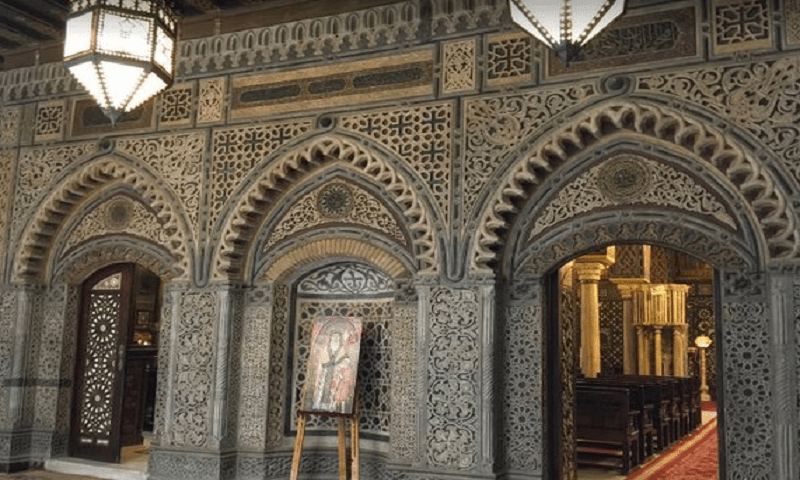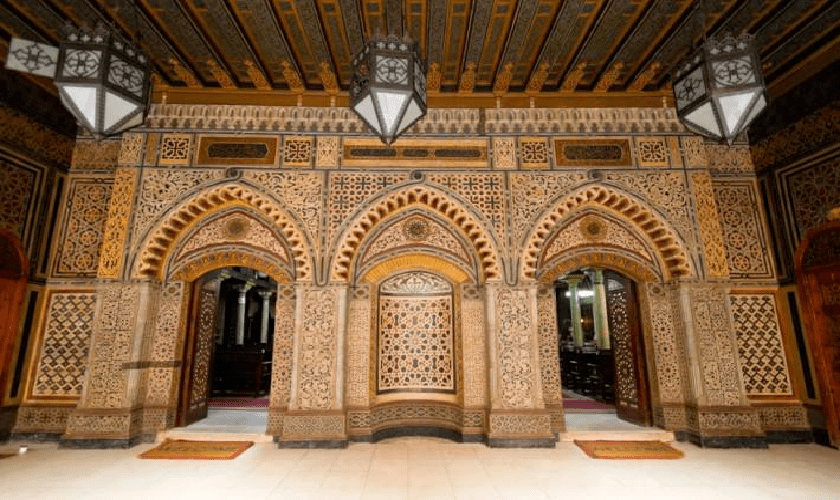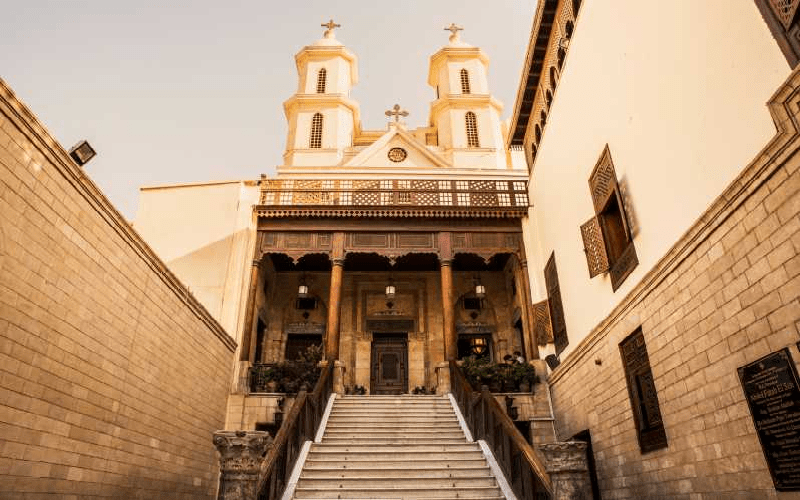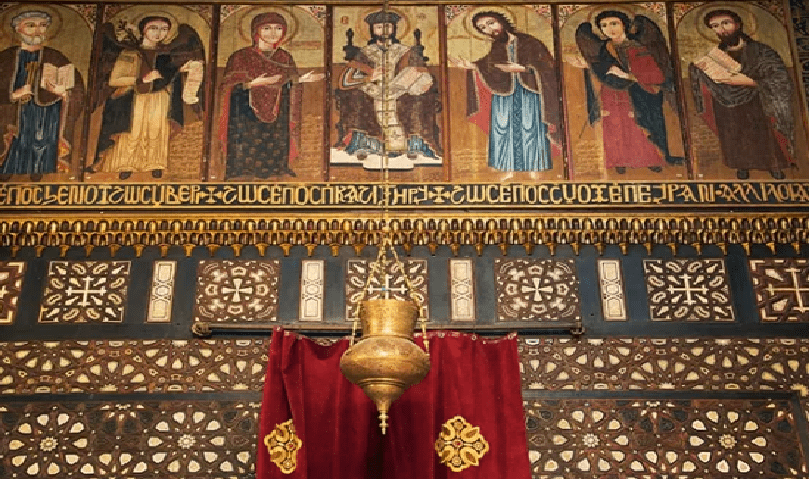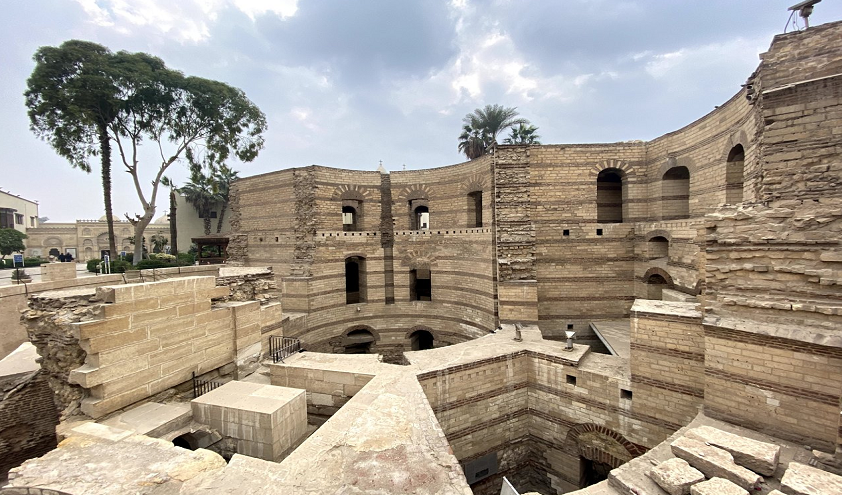- Home
- Egypt Attractions and best things to visit
- Cairo Top Tourist Attractions | Places To Visit In Cairo Egypt
- Old Cairo and the hanging church
Al Muallaqa hanging church, Palm trees logs and layers of stones were constructed above the towers to be used as a fundament, then the hanging church was erected above, The church was built in the basilican style, was designed to mimic the shape of Noah's ark.
Dimensions of the hanging church in meters are 23.5 length, 18.5 width and height 9.5 meters.
The church has a total of 110 icons dating back to different centuries, The iconstasis ( sanctuary screen ) is made of cedar wood and ebony inlaid with ivory.
Old Cairo means the monuents of Fustat city, Fustat city was the first Islamic captal of Egypt, it was erected about 1400 years ago, while Cairo city was erected about 1040 years ago, This means that El Fustat city is elder than Cairo, but as Cairo grew quicly, and had many extensions, soooo it embraced all the ex Islamic capitals, and they became just parts of Cairo today, That is why we call El Fustat area Old Cairo, as it is the eldest part of Cairo today.
Fustat or old Cairo is called also the complex of three religions, as there is located the first mosque erected in Egypt , Amr Ibn Aas mosque, and the first Synagogue and first churches.
The most important things to visit in old Cairo:
The Hanging church in Old Cairo
Al Muallaqa hanging church, It was erected Palm trees logs and layers of stones were constructed above the towers to be used as a fundament, then the hanging church was erected above, The church was built in the basilican style, was designed to mimic the shape of Noah's ark.
Dimensions of the hanging church in meters are 23.5 length, 18.5 width and height 9.5 meters.
The church has a total of 110 icons dating back to different centuries, The iconstasis ( sanctuary screen ) is made of cedar wood and ebony inlaid with ivory.
The 11th century marble pulpit surmounts 15 pillars.
The baptism font dates back to the 5th century.
The church became the seat of the coptic patriarch for several centuries
Click for more info about Old Cairo churches tours or contact us for more information.
The foundation of Babylon Fortress
Archaeological evidence and the accounts of ancient writers indicate a date
during the Late period ( 664-525 BC) for the first settlment in Old Cairo,
Ceramic finds suggest this first foundation was a river port with extensive trading contacts throughout the Levant and the Aegean.
The settlement at Babylon thus appearss to be conteporary with the first attempted cutting of a canal between the red sea and the valley Nile by Necho II ( 610-595 BC) and its successful completion by the Persian king Darius ( 521-486 BC )
The first century BC
The first-century-BC account of the Greek geographer Strabo links the name of settlement to its foundation by the some Babylonians who taken refuge there Babylon occupied a position of great strategic importance at the head of the Nile valley, as well as a natural crossing point of the Nile via the island of Roda and conflux of a number of important east-west-trade routes.
Roman Babylon- the two phases of the harbour and the fortress \In 112 AD the Roman emperor Trajan shifted the head of the Red sea canal to Babylon and built a massive stone harbour around the entrance of the canal. The re opening of the canal by Trajan was connected to strategic and commercial interests in the
in the eastern empire following the annexing of Nabataea in 106 AD. Around 300 AD the Emperor Diocletian secured this important strategic location by constructing the massive fortress Babylon, The fortress formed part of a comprehensive military and administrative reorganization of Egypt that included the construction of a string of strategic fortresses along the length of
the Nile valley. The alignment of the fortress was derived from the existing riverside walls of the Trajanic harbour and the canal, with the eastern and western walls of the fortress framing two enclosures of equal width on either side of the canal. The entrance to the canal remained the same,although it was now flanked by the massive round towers that today mark the entrance to Coptic museum.


